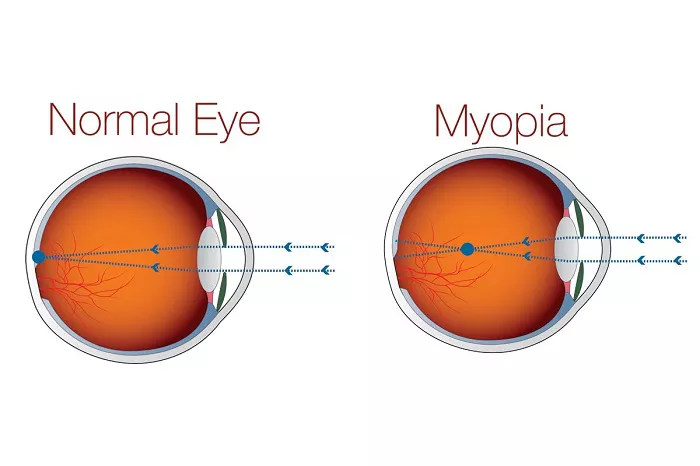Yes, it is possible to be shortsighted (myopic) in one eye while having normal vision or farsightedness (hyperopia) in the other. This condition is known as anisometropia.
What Is Anisometropia?
Anisometropia refers to a significant difference in the refractive power between the two eyes. This disparity can lead to various vision problems, including:
- Blurred or double vision
- Difficulty with depth perception
- Eye strain and headaches
In some cases, the brain may suppress the image from the weaker eye, leading to amblyopia, commonly known as “lazy eye” .
Types of Anisometropia
There are several forms of anisometropia:
- Simple Anisometropia: One eye has a refractive error, while the other is emmetropic (normal vision).
- Compound Anisometropia: Both eyes have the same type of refractive error but to different degrees.
- Antimetropia (Mixed Anisometropia): One eye is myopic, and the other is hyperopic.
Causes of Anisometropia
Anisometropia can result from:
- Genetic factors: A family history of refractive errors increases the risk.
- Eye shape abnormalities: Differences in the curvature or length of the eyes.
- Developmental issues: Problems during eye development can lead to unequal refractive powers.
Symptoms of Anisometropia
Individuals with anisometropia may experience:
- Blurred vision: Especially when viewing objects with both eyes.
- Headaches and eye strain: Due to the effort to focus.
- Difficulty with depth perception: Problems judging distances accurately.
- Squinting: Attempting to improve focus.
Diagnosis of Anisometropia
Anisometropia is typically diagnosed through a comprehensive eye examination, which may include:
- Visual acuity tests: To assess clarity of vision.
- Refraction tests: To determine the refractive error in each eye.
- Binocular vision assessments: To evaluate how well the eyes work together.
Treatment Options for Anisometropia
Treatment depends on the severity of the condition and the individual’s age:
- Corrective lenses: Glasses or contact lenses can compensate for the refractive differences.
- Vision therapy: Exercises to improve coordination and focusing abilities of the eyes.
- Refractive surgery: Procedures like LASIK may be considered in adults with stable prescriptions.
- Intraocular lenses: Implantation may be an option in certain cases.
Living with Anisometropia
With appropriate treatment, individuals with anisometropia can lead normal lives. Regular eye exams are essential to monitor the condition and adjust treatments as necessary.
Conclusion
In summary, anisometropia is a condition where one eye has a different refractive power than the other. While it presents challenges, various treatment options are available to correct the vision disparity and improve quality of life.
Related topics:


